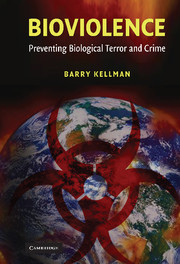Foreword, by Ronald K. Noble, Interpol Secretary General
Published online by Cambridge University Press: 27 July 2009
Summary
Throughout the centuries, diseases unleashed by nature have savaged humankind on a horrific scale, inflicting wide-scale death, as well as social, political, and economic upheaval. In the 20th Century alone, more people died of smallpox (over three hundred million) than in both world wars combined, and an influenza epidemic claimed over forty million lives. Even a disease that afflicts only animals can have devastating consequences. The outbreak of foot and mouth disease in the United Kingdom in 2001 took months to control, required the slaughter of millions of animals, and caused billions of dollars in losses.
These are the risks posed by nature. Now, added to these risks, we face the threat of bioterrorism.
We know from recent events that terrorists remain committed to perpetrating large-scale violence. And we also know that there is much evidence that terrorists have a strong interest in the use of biological weapons and are planning to use them. The eleventh volume of Al Qaeda's Encyclopedia of Jihad is devoted to chemical and biological weapons. Captured terrorist suspects have admitted that their organizations are plotting potential biological attacks. Authorities have seized documents, computer hard drives, and terrorist training materials that discuss the acquisition, production, and use of bioweapons.
We also know that, as biotechnology industries continue to expand throughout the world, new pathogens and pathogen-making technologies are rapidly proliferating, increasing the risk that terrorists could get their hands on deadly pathogens or on the means of producing them.
- Type
- Chapter
- Information
- BioviolencePreventing Biological Terror and Crime, pp. xvii - xxviPublisher: Cambridge University PressPrint publication year: 2007



